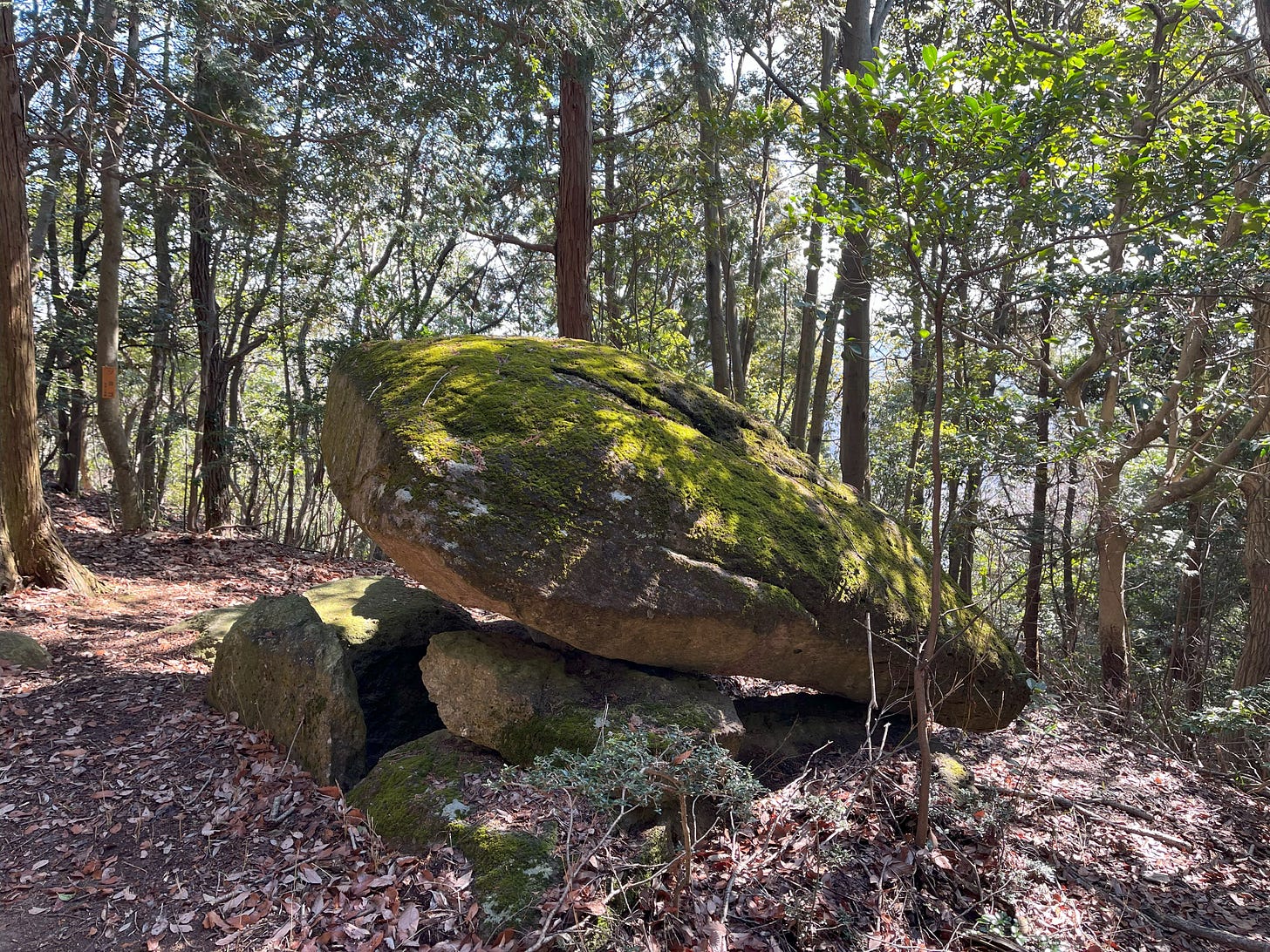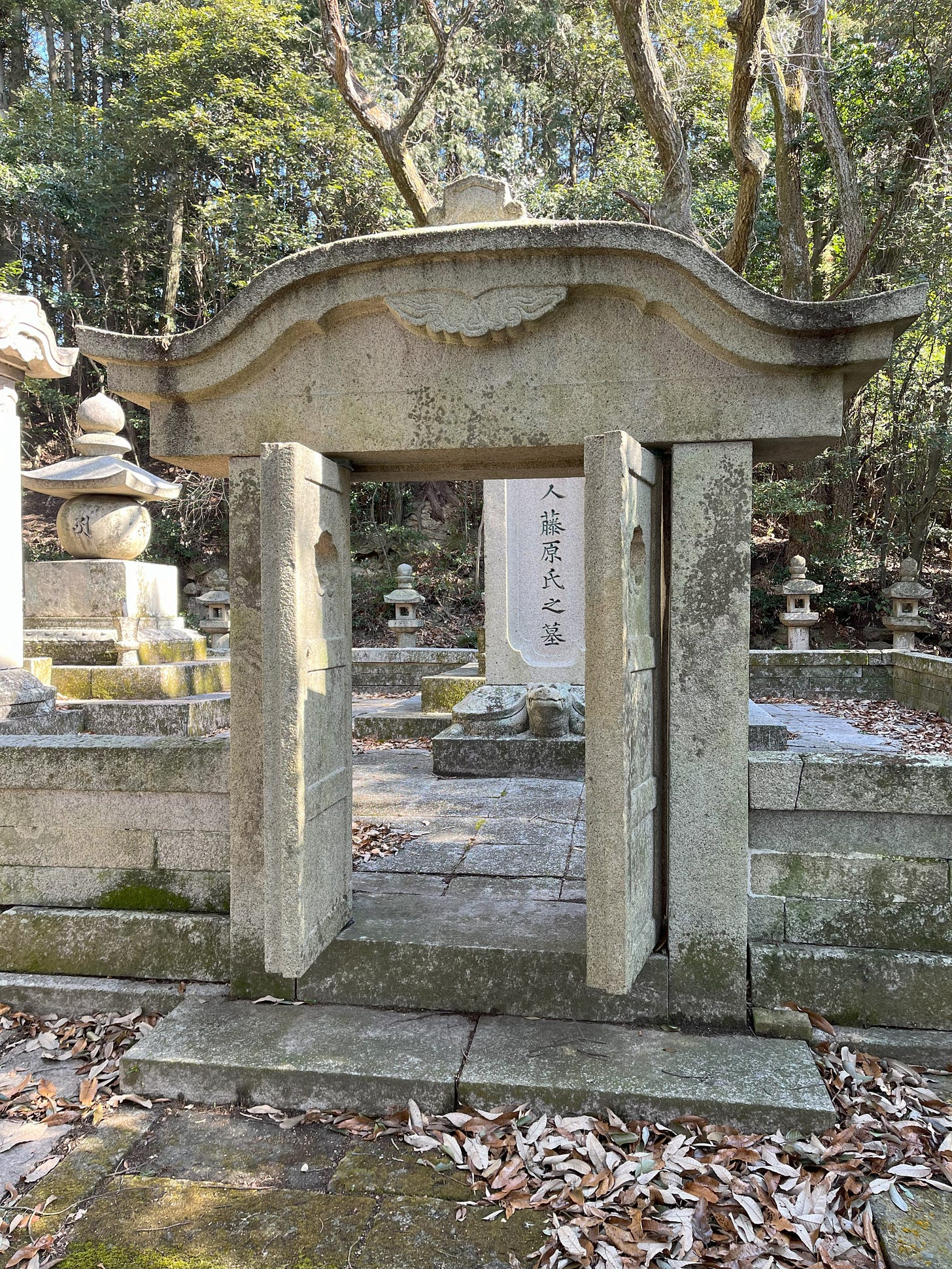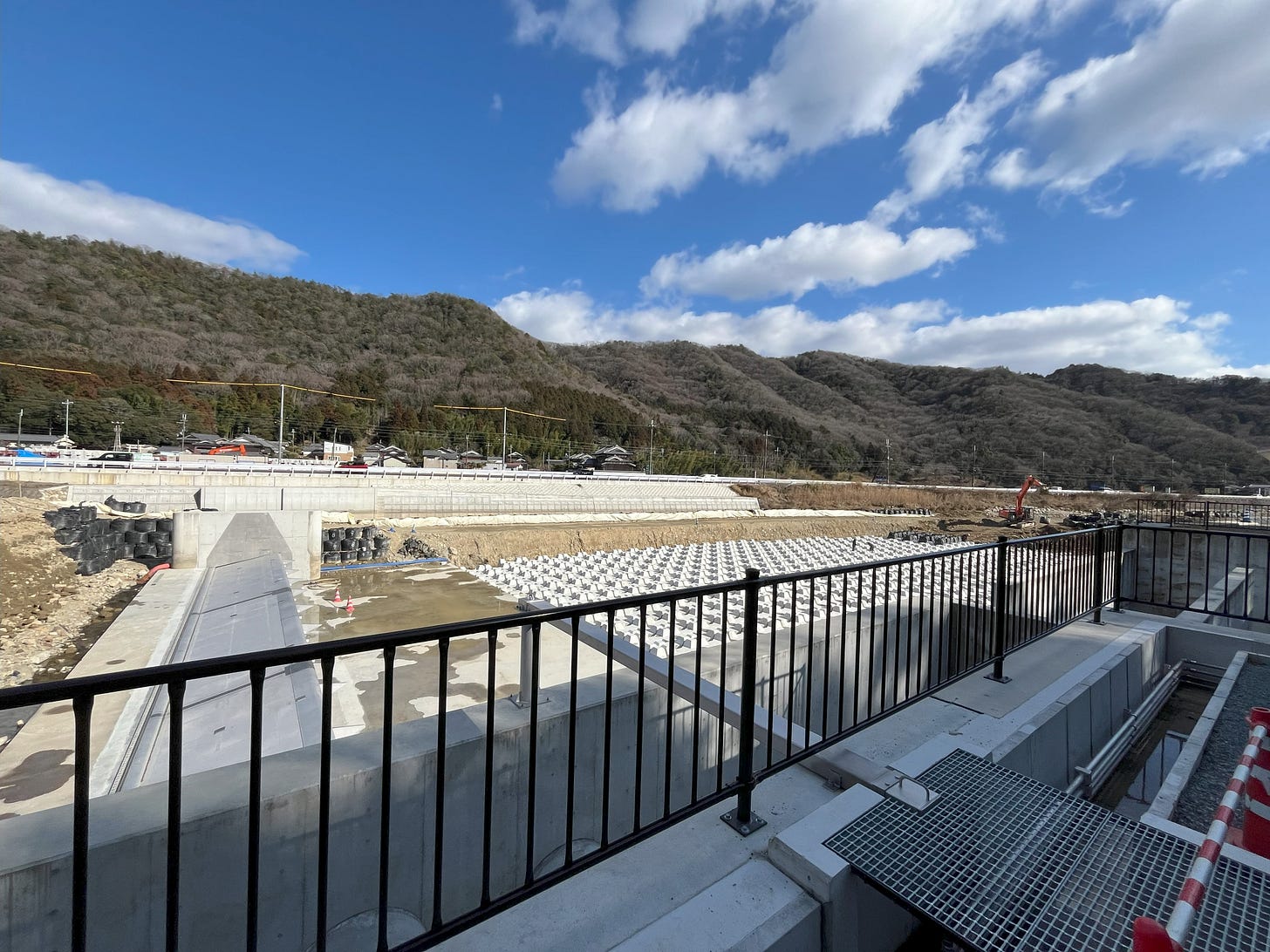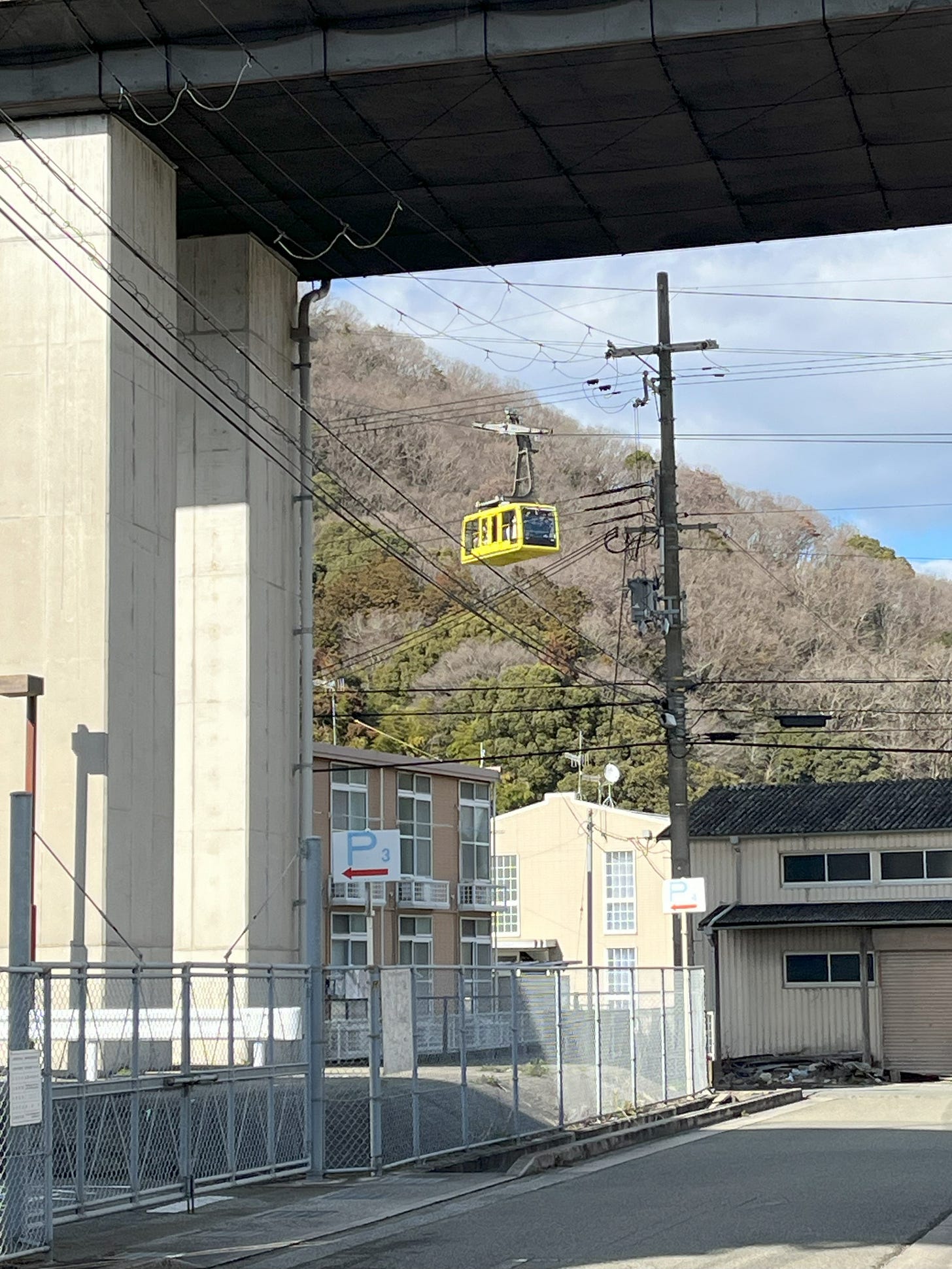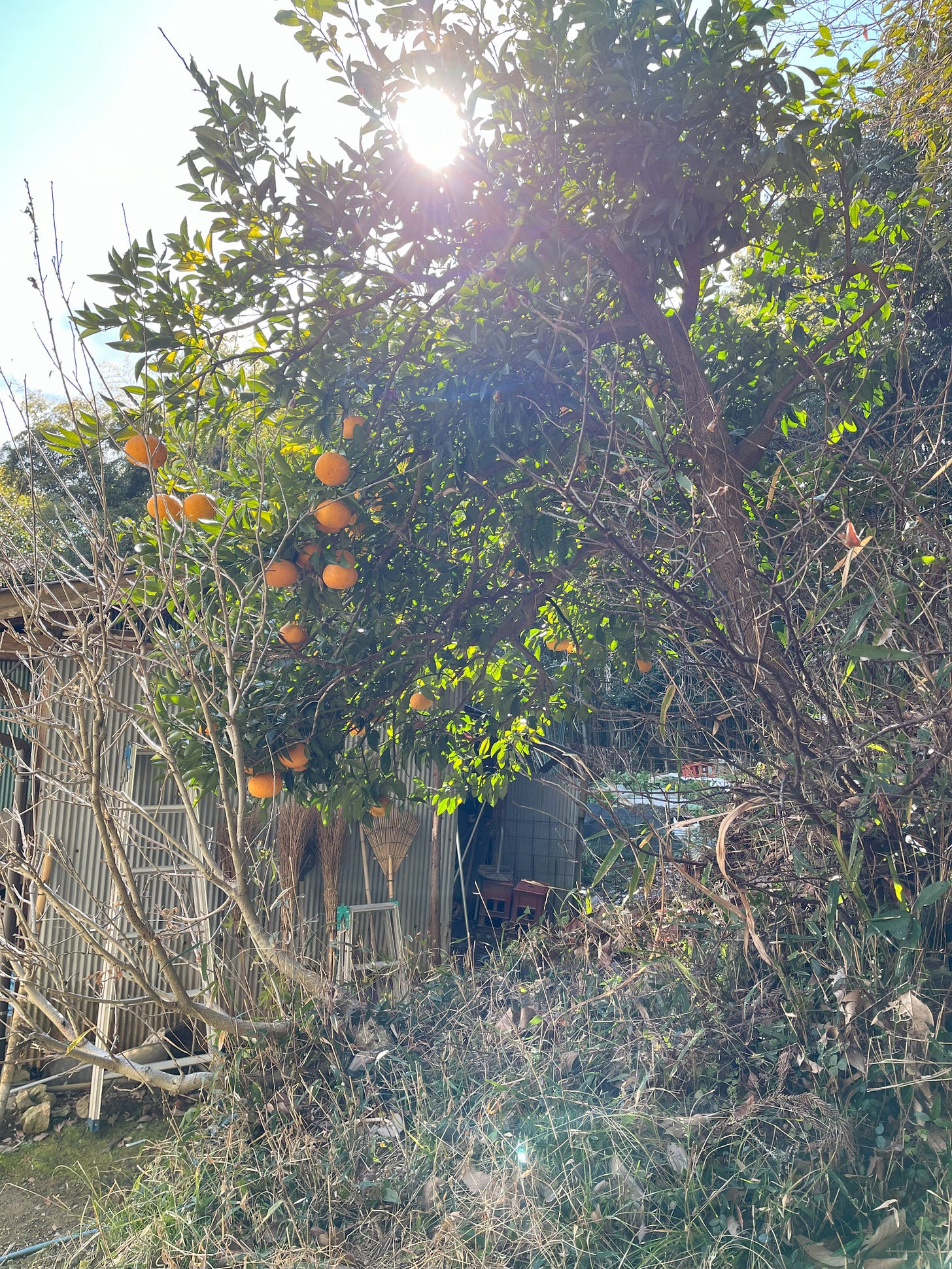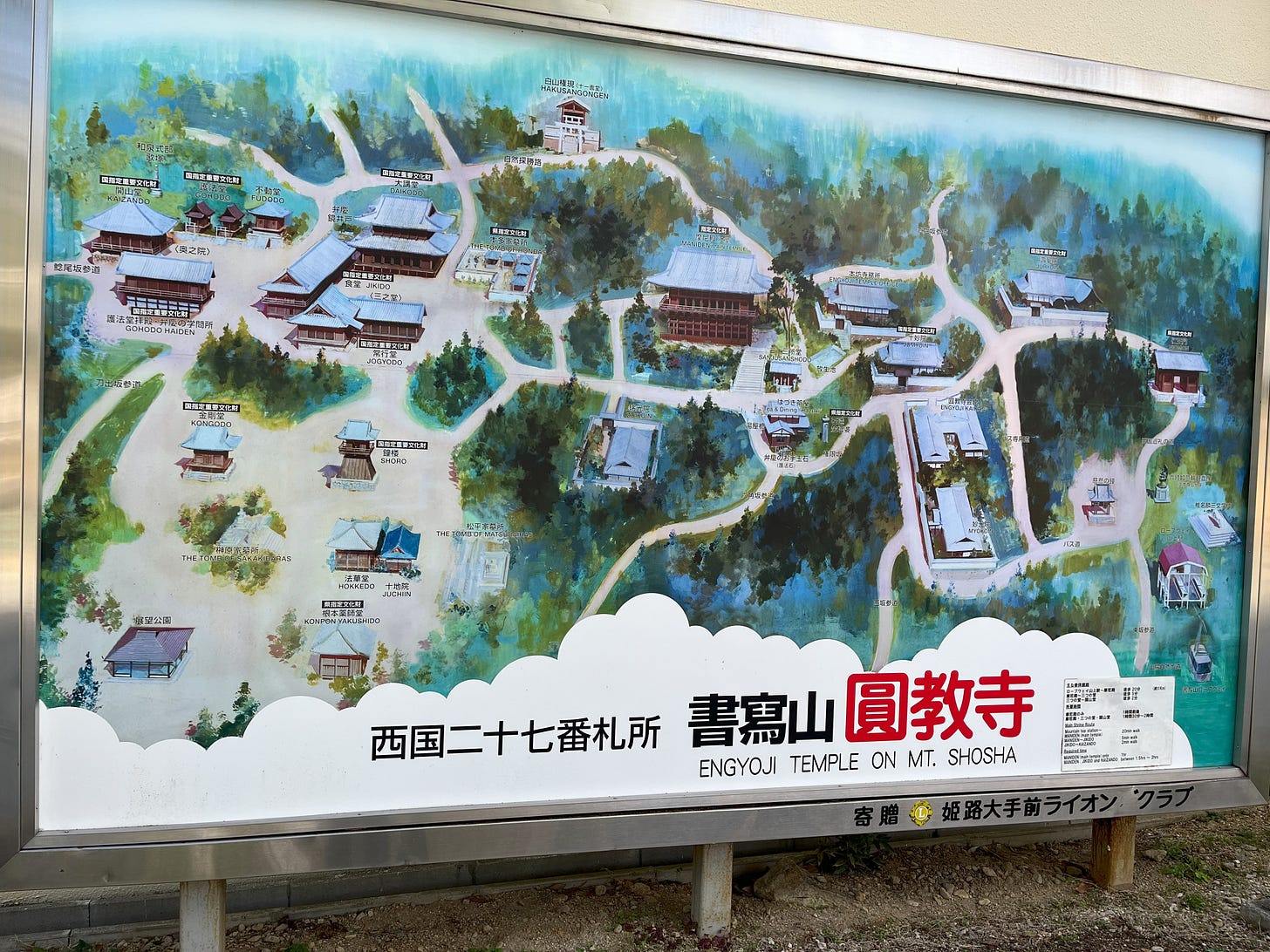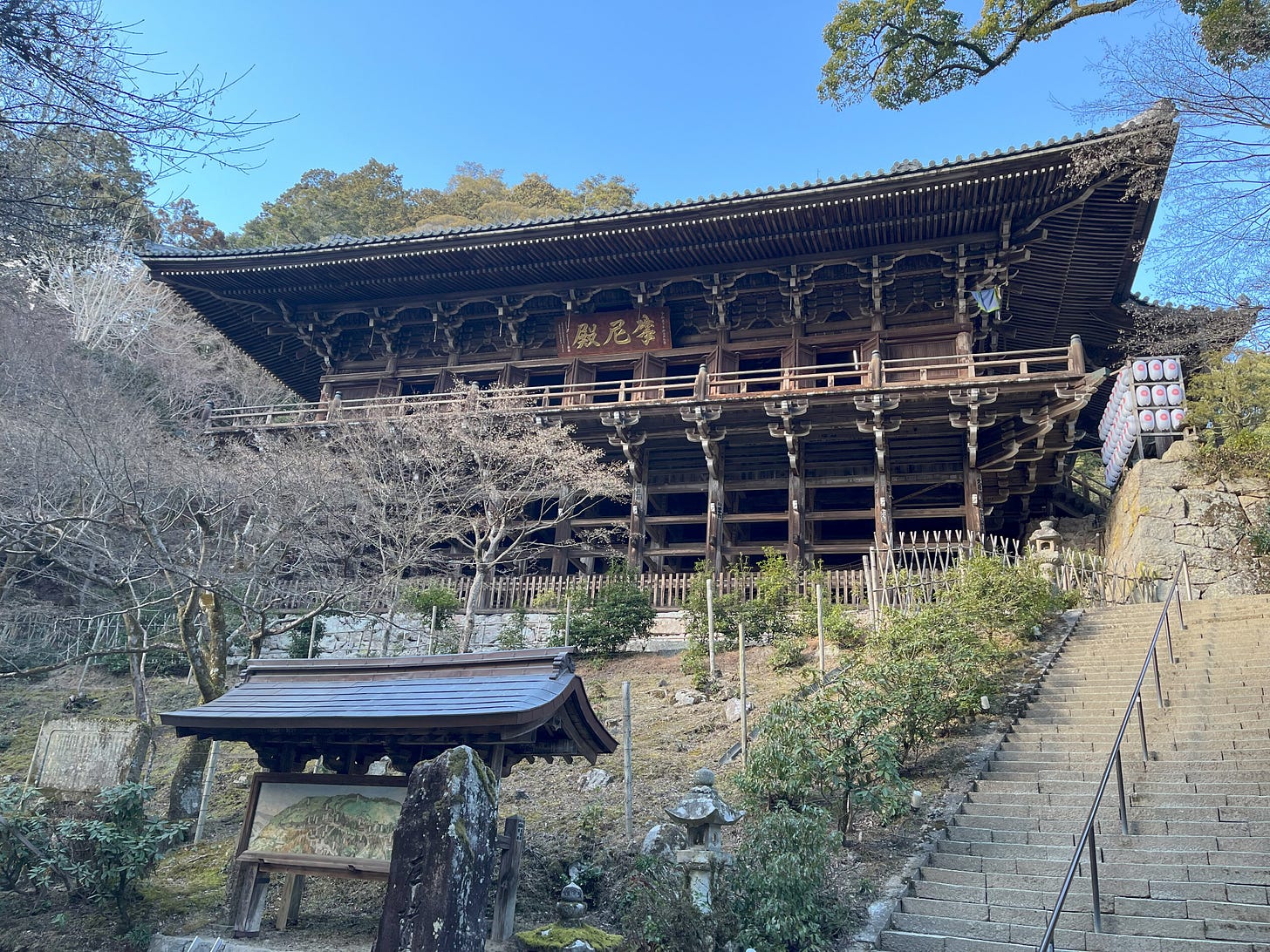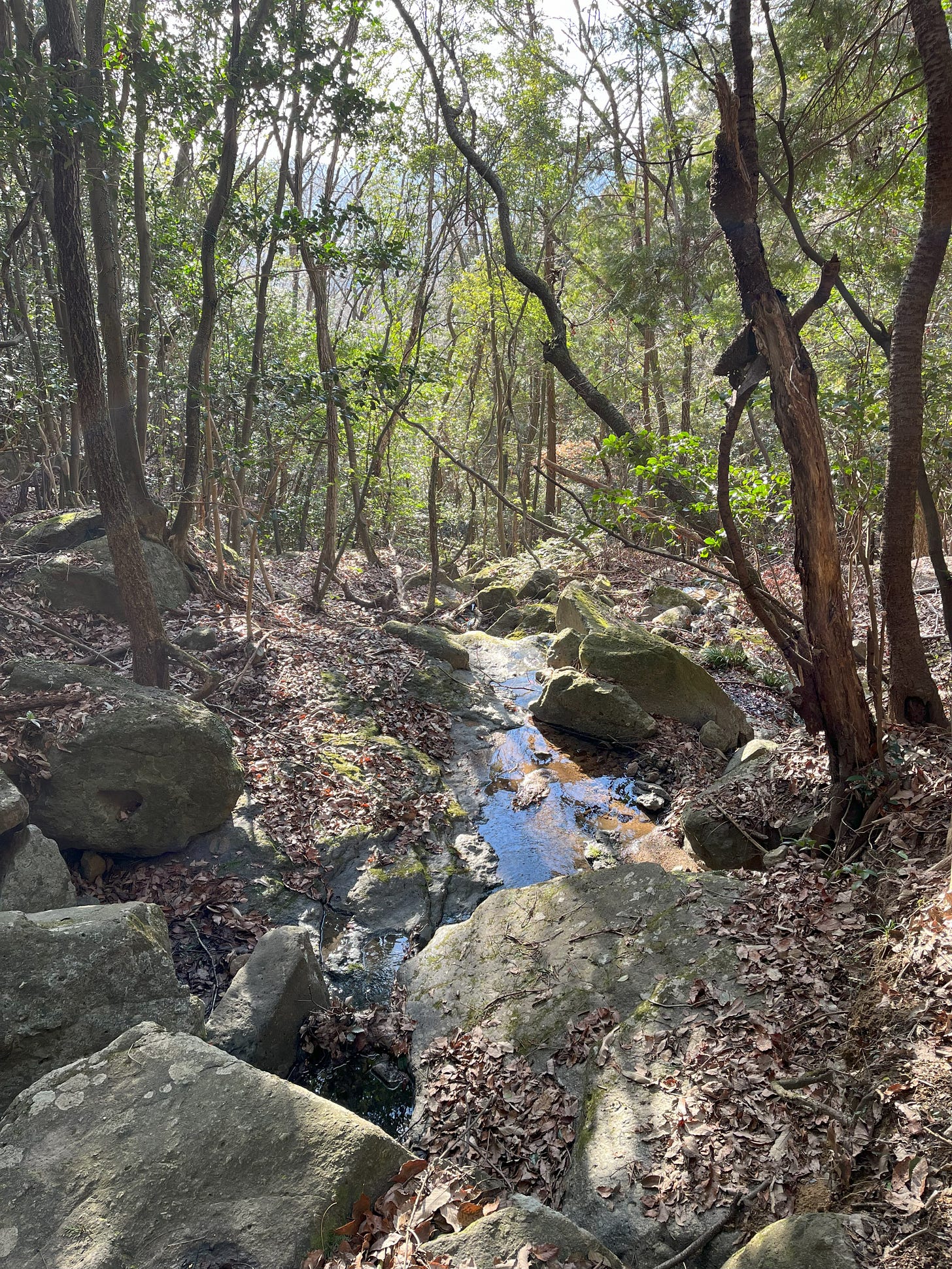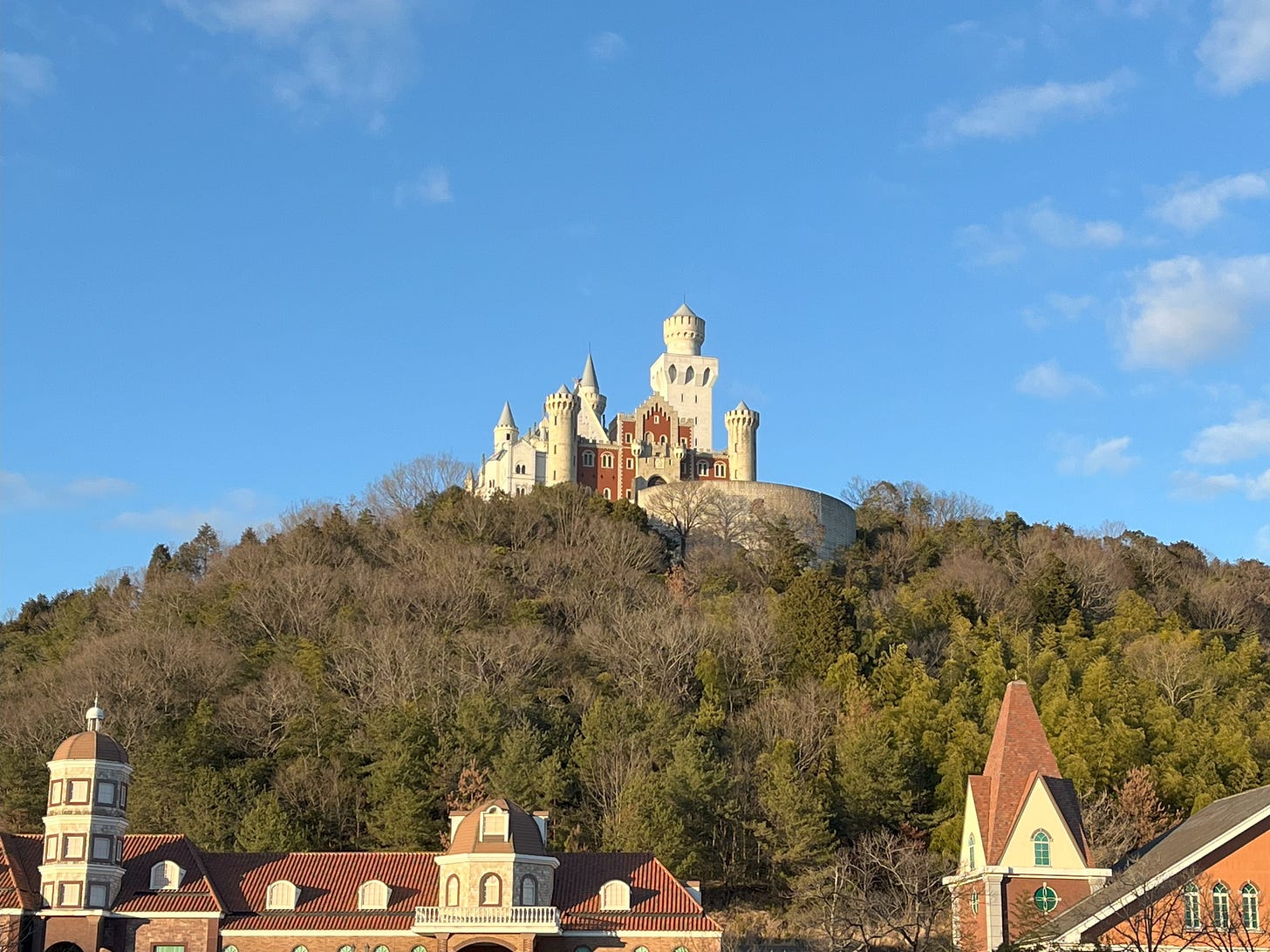500 Yen and the Last Samurai
From Tohori to Oichi along the Kinki Nature Trail
The other side of what I had taken to be run-down apartments next to Tohori station turned out to be a row of shops with living/office space above. All were permanently closed. Most shuttered. But one had no shutters and on the side “Let’s tackle the prefectural government! Renew Hyogo for Our Children’s Future!” and underneath, the name of a local politician.
On the other side of the road though, a shiny successful-looking building — the headquarters of Showa Glove manufacturers, “Always Innovating, Never Imitating”. Then left, and up a tight valley. Stone was cut from here to make the foundations of Himeji Castle. On, past a small shrine in the middle of the river. I found a nice branch of Himalayan Ash to act as a walking stick. Ray Mears would have been proud. I was ready to go off-road.
The path was clearer than the one up to the temple on the previous-day’s walking, but the stick came in useful as a balance aid on the more precarious parts. Hikers passed the other way. Did they see my stick as threatening in a way their professional metal sticks weren’t?
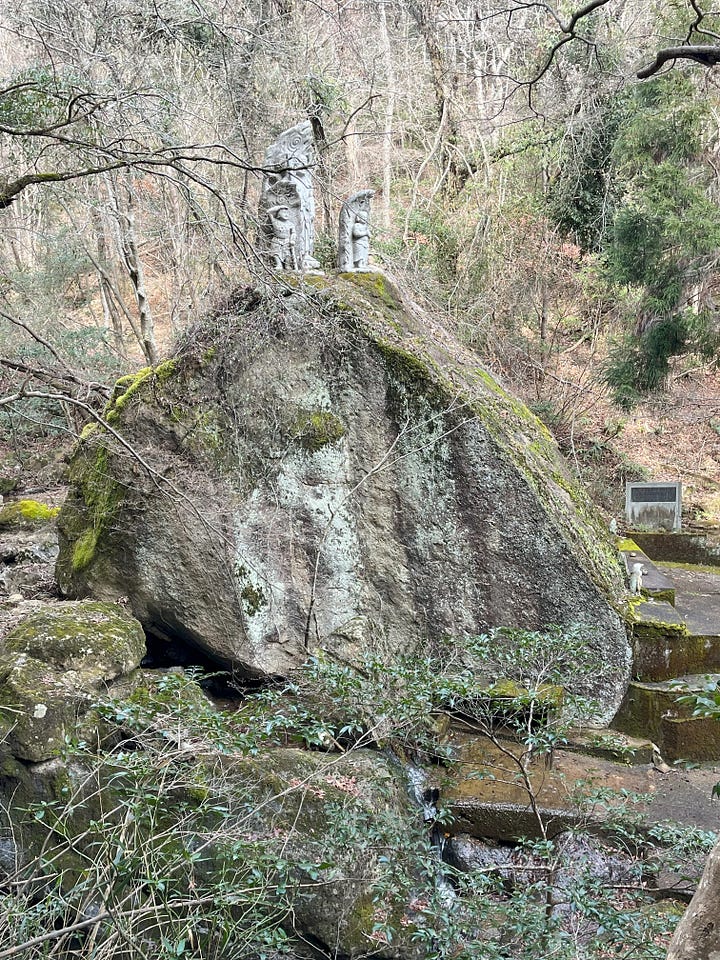
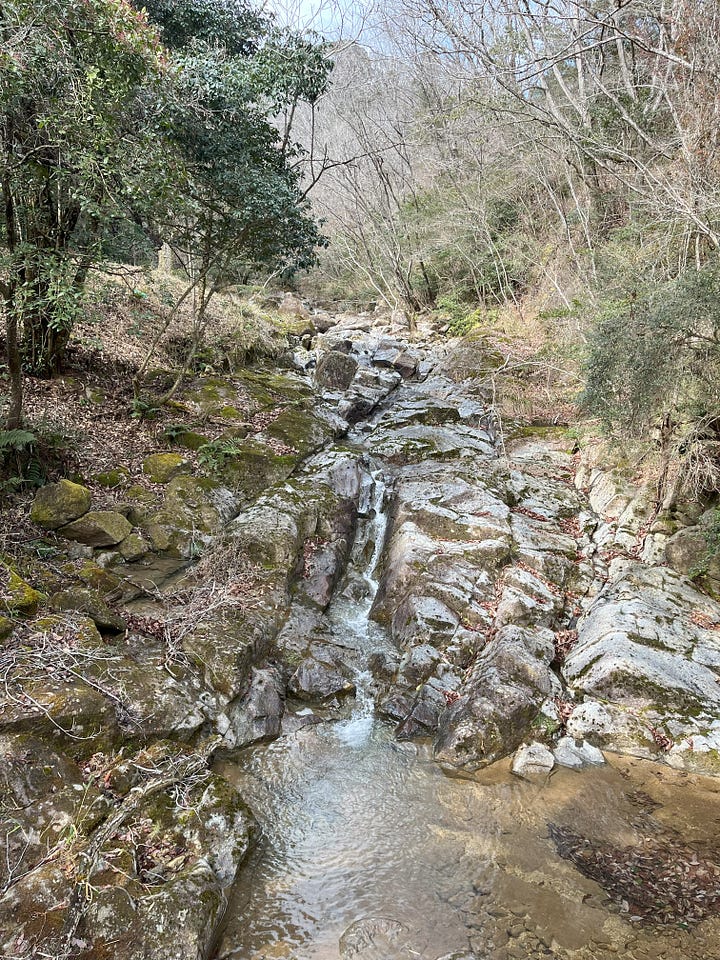
Out onto the summit. Views over Himeji and the islands of the Inland Sea beyond. Across a series of summits, the rocky path climbing and falling. I stopped to eat a Kendal Mint Cake snack which had been in my rucksack since I came back from England a month earlier, on one such path, wedged between rocks off the path edge. A guy with a multi-coloured shirt and black mask up to his eyes who had been following me for half an hour finally went past me. Then it was just me, alone on the mountainside.
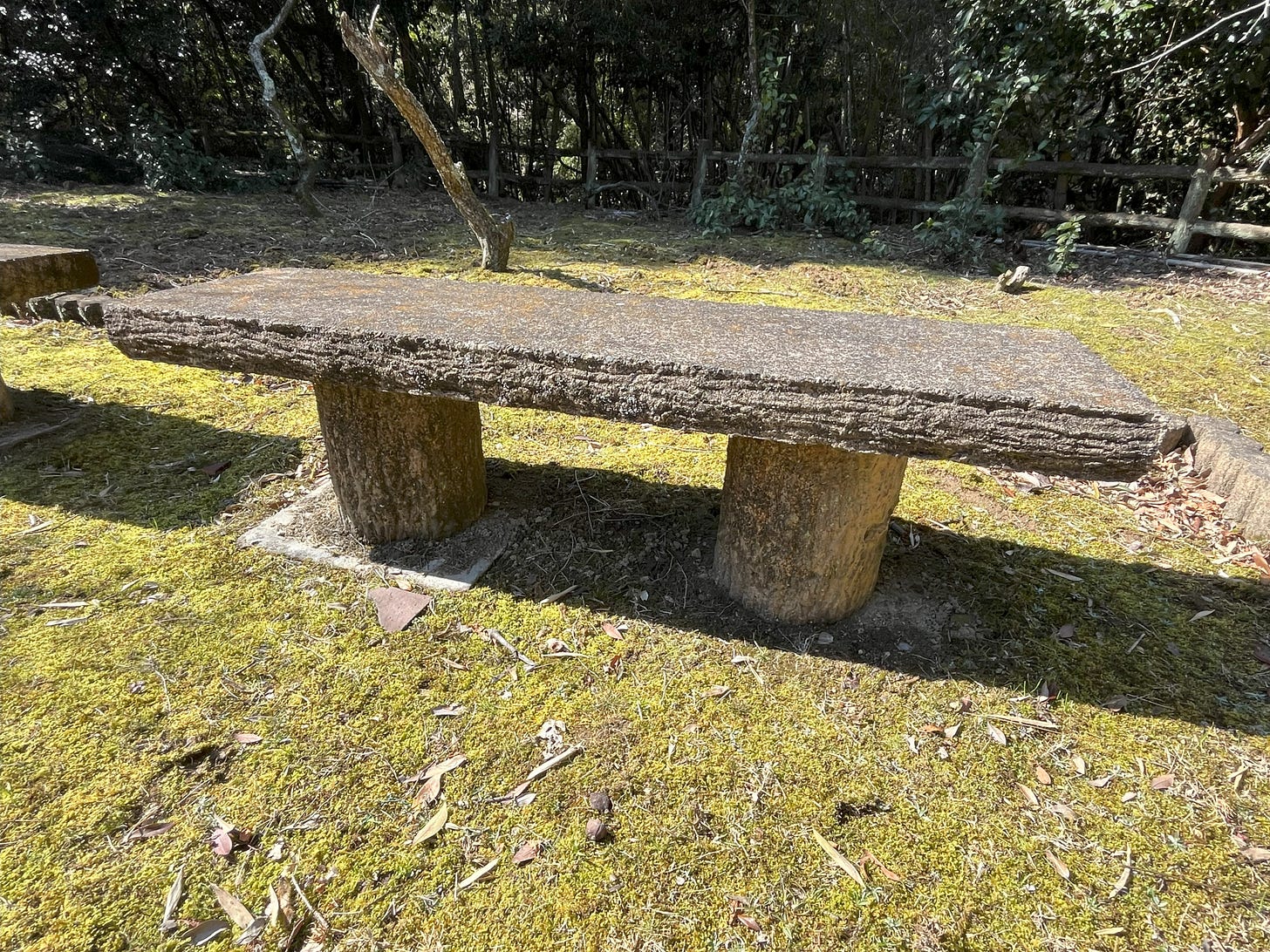
Finally the path dropped down, past a dam, then some houses. A glimpse of the upturned feet of a wild boar in a wheelbarrow, and out into another valley. I crossed the Yumesaki River and found the Kinki Nature Trail on the other side, hugging the bottom of the forest where it met the valley floor.
The river was getting new weirs and fish runs. The path went right through the construction site. Construction workers looked up in surprise as I passed. Then I was confronted with the humming and twanging of the Mount Shosha cablecar (ropeway). I was hungry. The Kendal Mint Cake (essentially a block of solid sugar with some peppermint oil) had provided needed calories, but hadn’t really filled me up. The only food available at the cable car station were sticks of sticky dango dumplings — too small, too sticky, I needed proper sustenance.
I started the climb up Mount Shosha. Some elementary-age kids with their parents going the other way greeted me in English. I scrabbled up the orangey-slope, panting until I reached the upper cable car station. At the entrance to the Mount Shosha complex was a barrier, with an entrance fee of 500 yen. But I was just passing through, it was mid-afternoon already, I wouldn’t have time to look at any of the temple complex, I had to get a move on if I wanted to reach a train station by dark. Besides, something in my British sensibility was appalled at the idea of paying money to walk along a right-of-way. And so, I played dumb and casually walked through the exit rather than the entrance. The exit sign was conveniently painted green. Green for go, right? I only got about twenty metres before one of the old ladies in the ticket booth called out “Excuse me!” I was caught. In vain did I protest that I was just passing through.
Mount Shosha’s claim to fame is that parts of the Tom Cruise film “Last Samurai” were filmed here. Unfortunately, I missed all the parts of the temple complex involved in that production, but I did see some very beautiful parts of the temple which went some way towards easing my disgruntlement over the 500 yen.
I dropped down a pleasant trail on the other side of Mount Shosha. On the mountain ridge on the other side of the valley, the Neuschwanstein-like towers of Hakucho (swan) Castle appeared. In fact, the castle is a two-thirds scale reconstruction of Neuschwanstein Castle, part of a project by Kenzo Kadoguchi, a real-estate developer, to bring the world to disabled people, as it was difficult for them to go to the world. Taiyo Park, next to Hakucho Castle, is the other part of this project. It has reconstructions of the pyramids of Egypt, the Moai statues of Easter Island, the Arc de' Triomphe, The Great Wall of China, Tianaman Square, and the Terra Cotta Warriors of Xi'an. The castle is used as a filming location and is popular with cosplayers.
In the valley below the castle, I found a convenience store, where I stopped to buy and eat a very late lunch, and accidentally underpaid some tax. I hadn’t realised until I sat down and read a notice stuck to the window that I was supposed to pay 10 percent tax to eat in the store, but only 8 percent tax to buy food and take it home. I should have told the staff I would be eating in the store when buying the food, but there was no notice, or questions to this effect when buying the food. How many people tell the staff? The staff didn’t seem to care, so I didn’t feel too guilty. Besides, I’d paid that 500 yen to not see much of Mount Shosha.1
I wound my way through 1970s suburbs, then alongside a reservoir, where the Kinki Nature Trail made one of its inexplicably pointless detours. I was happily walking along a broad sidewalk next to a main road, then I was diverted along a parallel road that was smaller, with no sidewalk, but just as busy with people using it as a rat run. People weren’t just using it for that. The entire length of the road was lined with fly-tipped trash, cascading down the embankment into the reservoir at the bottom.
I left the trash road behind, passed a cat cafe, and descended into a valley of rice and vegetable fields. I walked alongside a river in the gathering gloom, while a tombo kite circled above, annoying a murder of crows in a tree below. There was the station — brand new building and car park and the comforting knowledge that the train would turn up after my trip back to the UK.
Incidentally, if you do want to get into Mount Shosha for free, there’s no ticket gate if you climb from the Katanade bus stop side where I came down. However, the extra bus fares etc to get you there will probably cost you more than the 500 yen!





